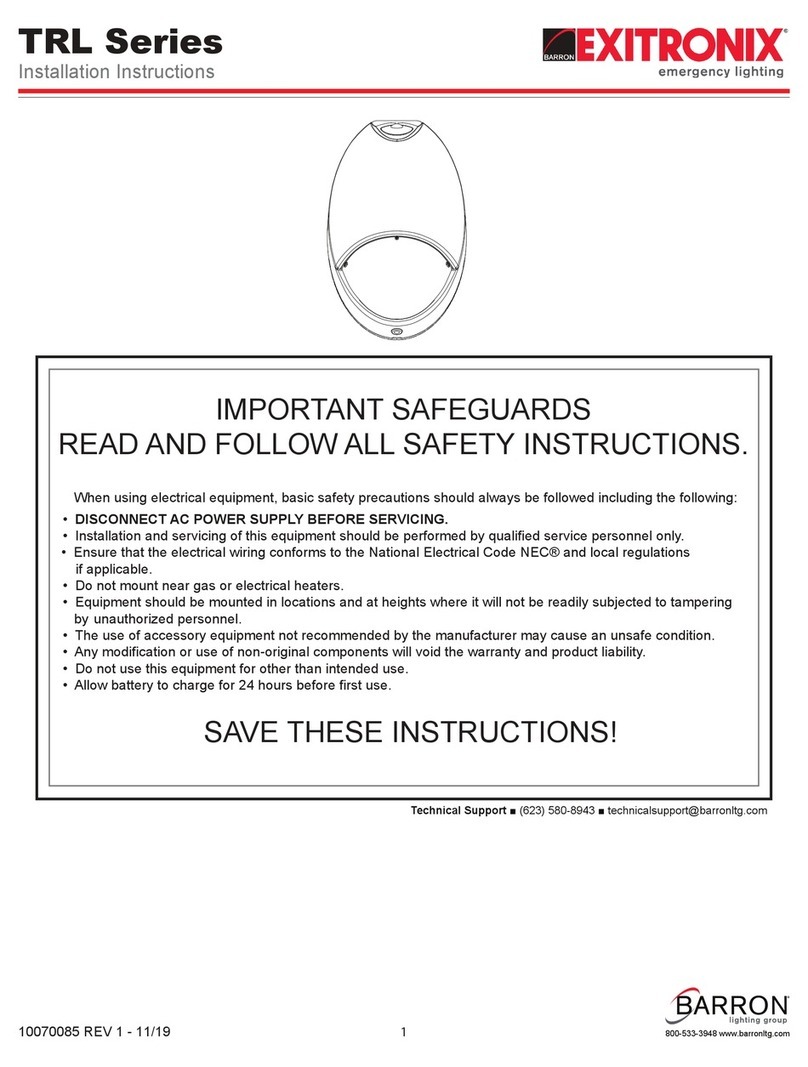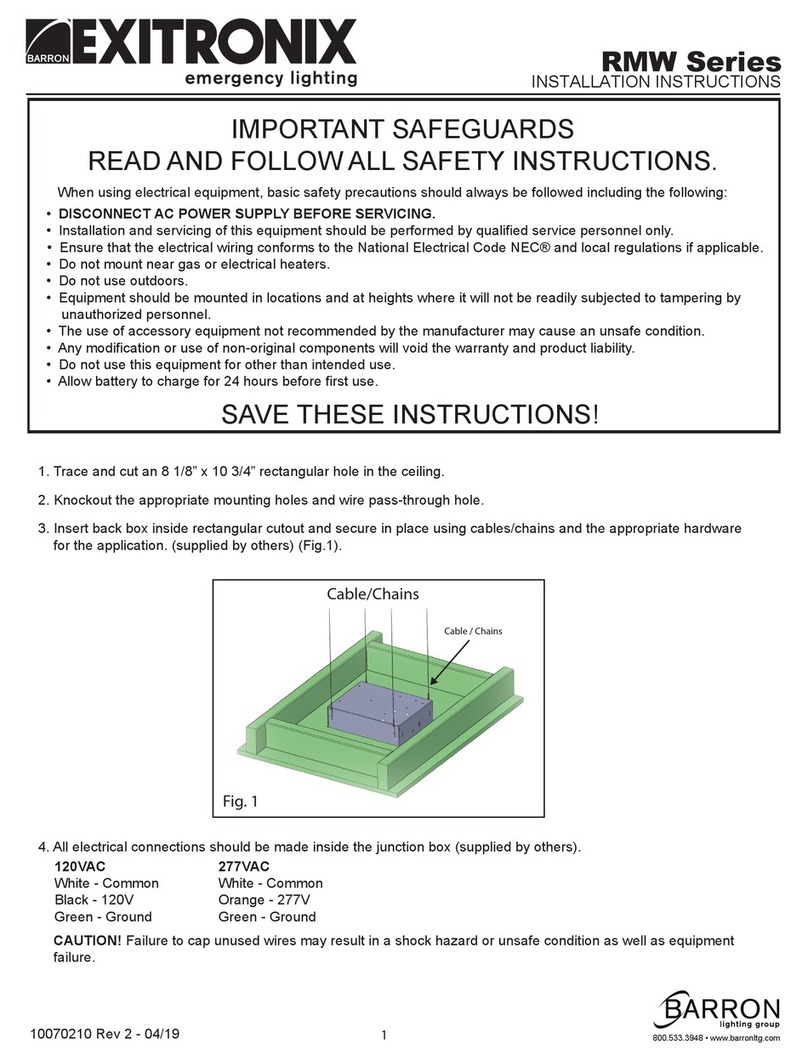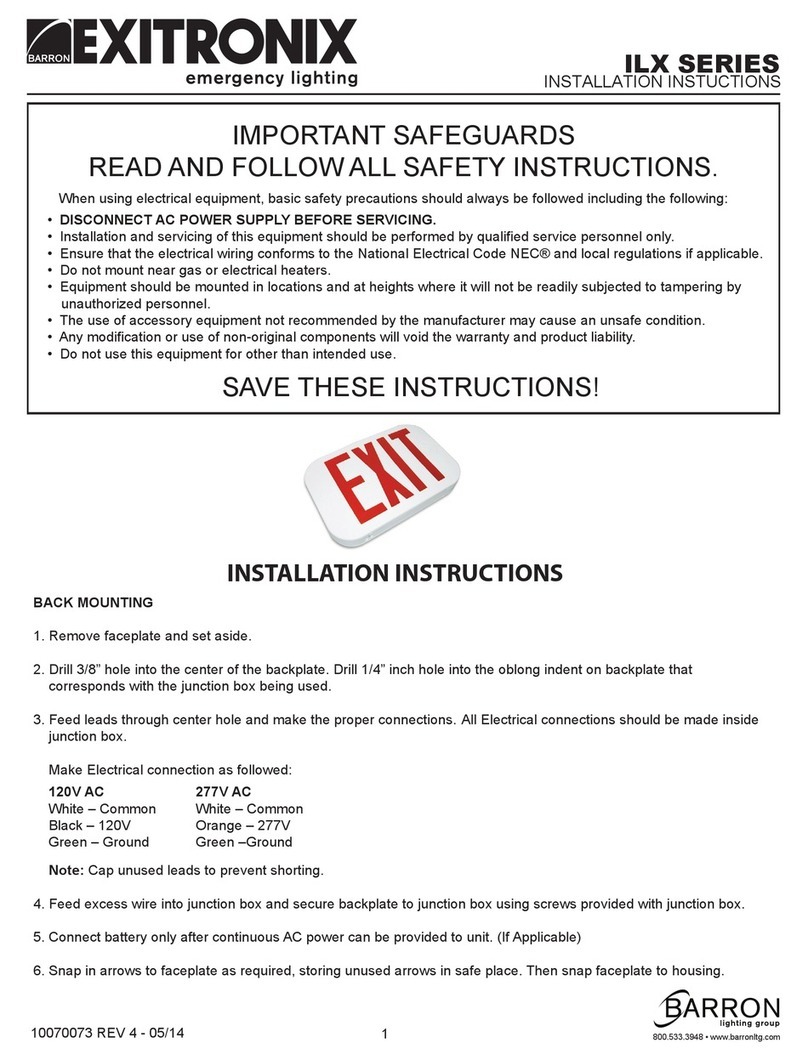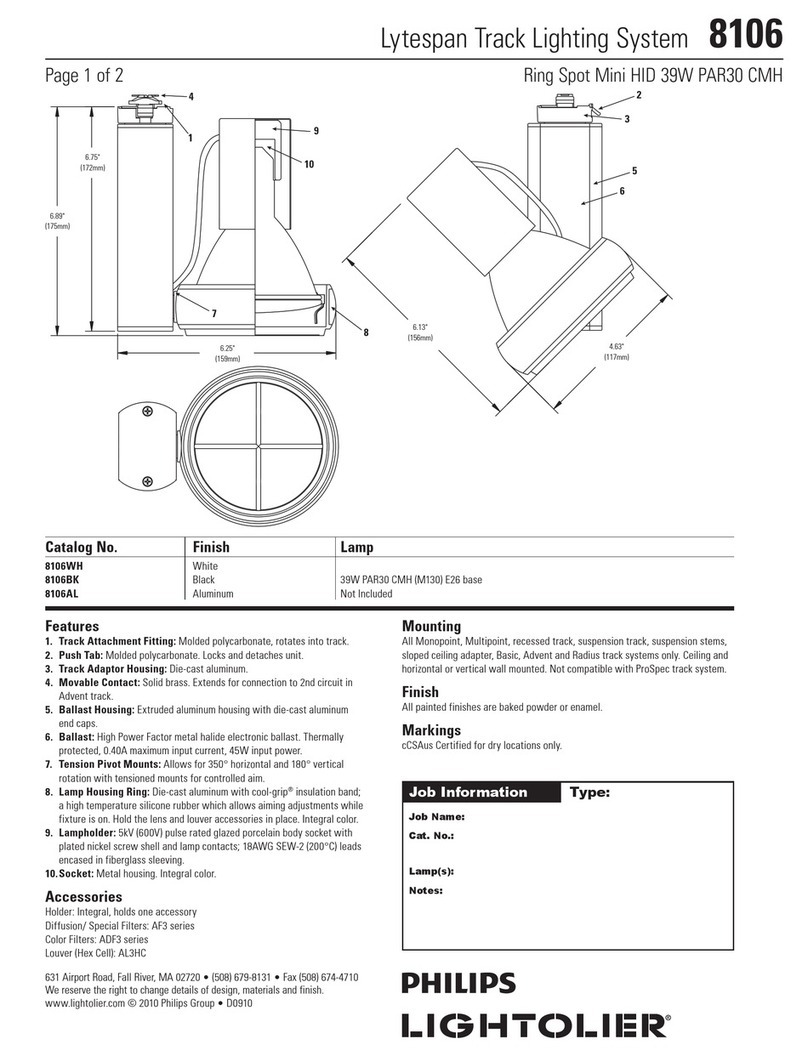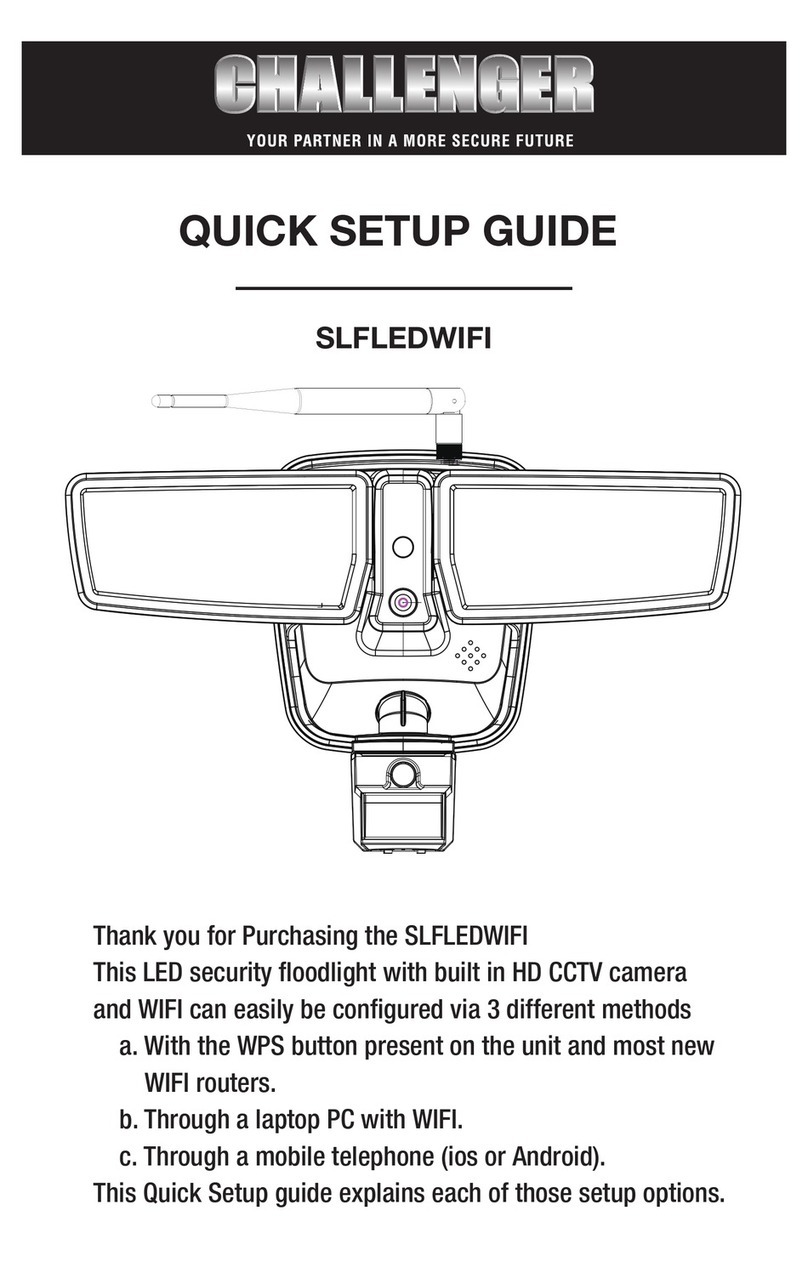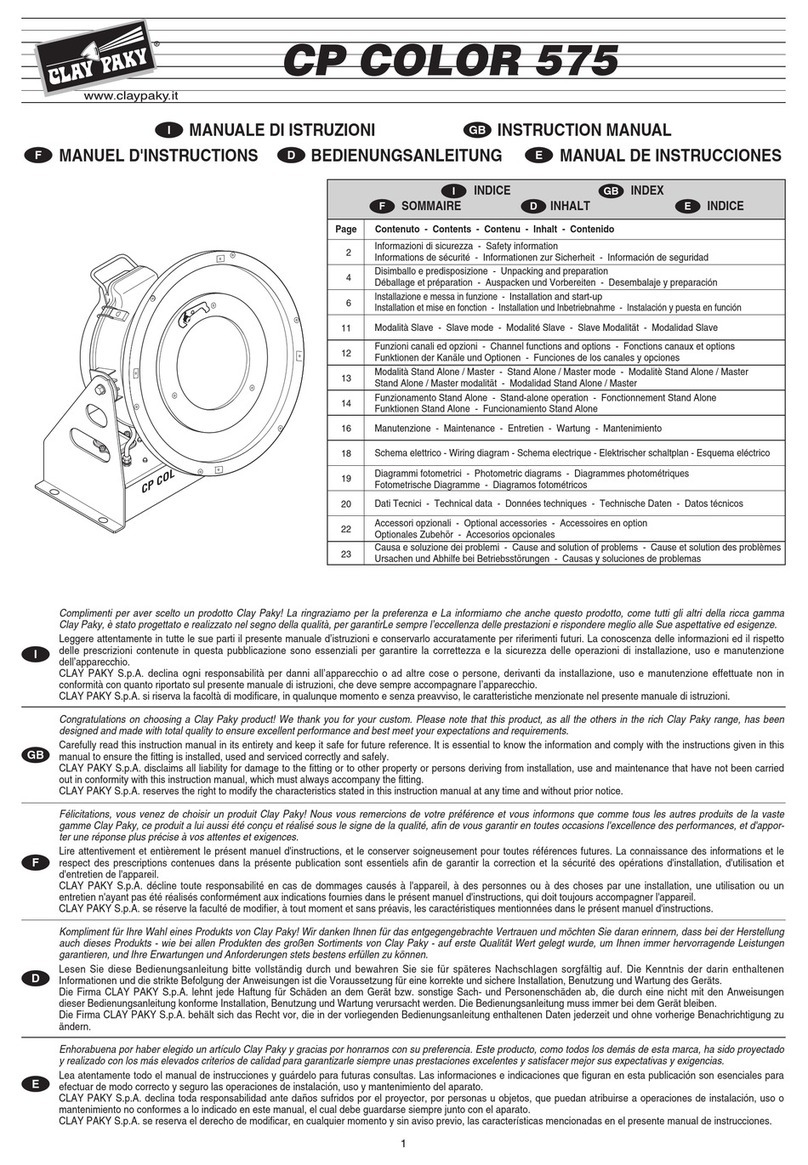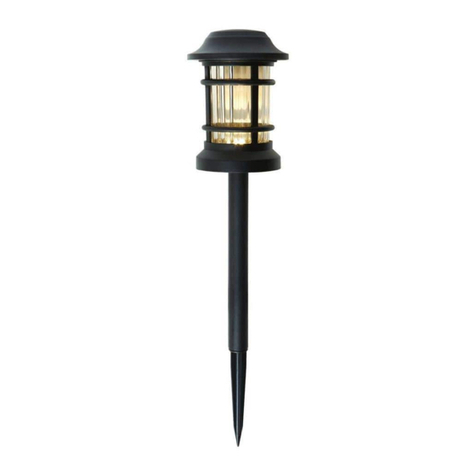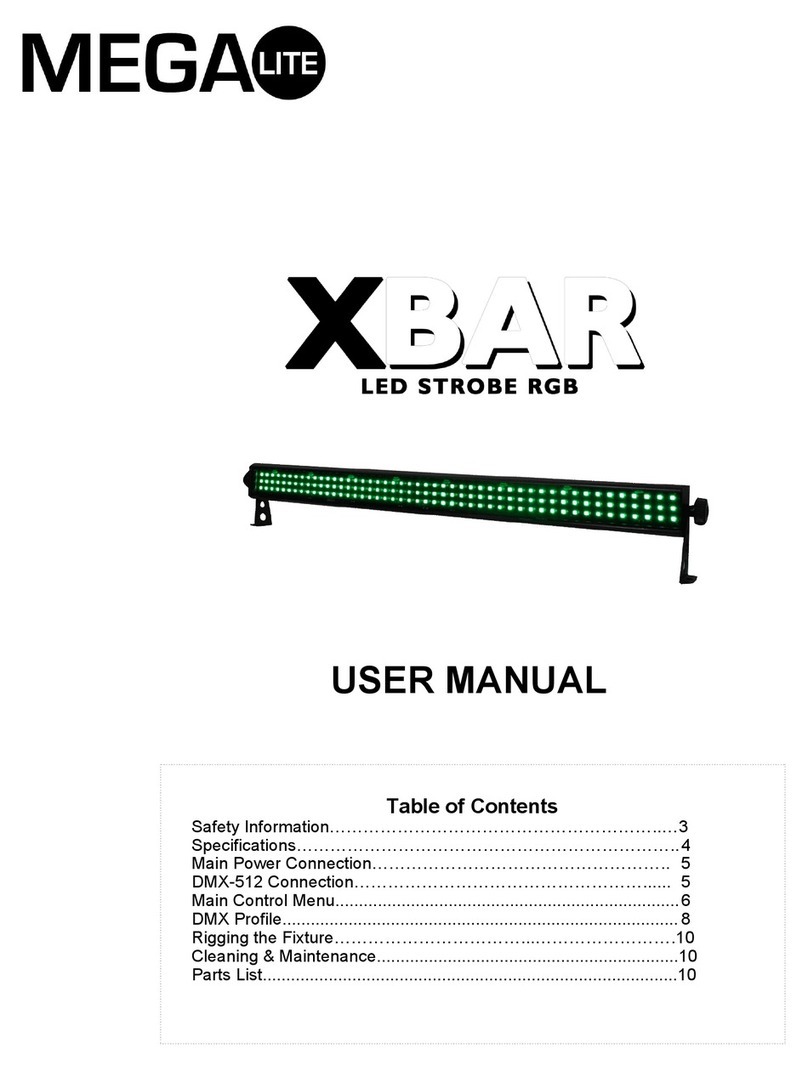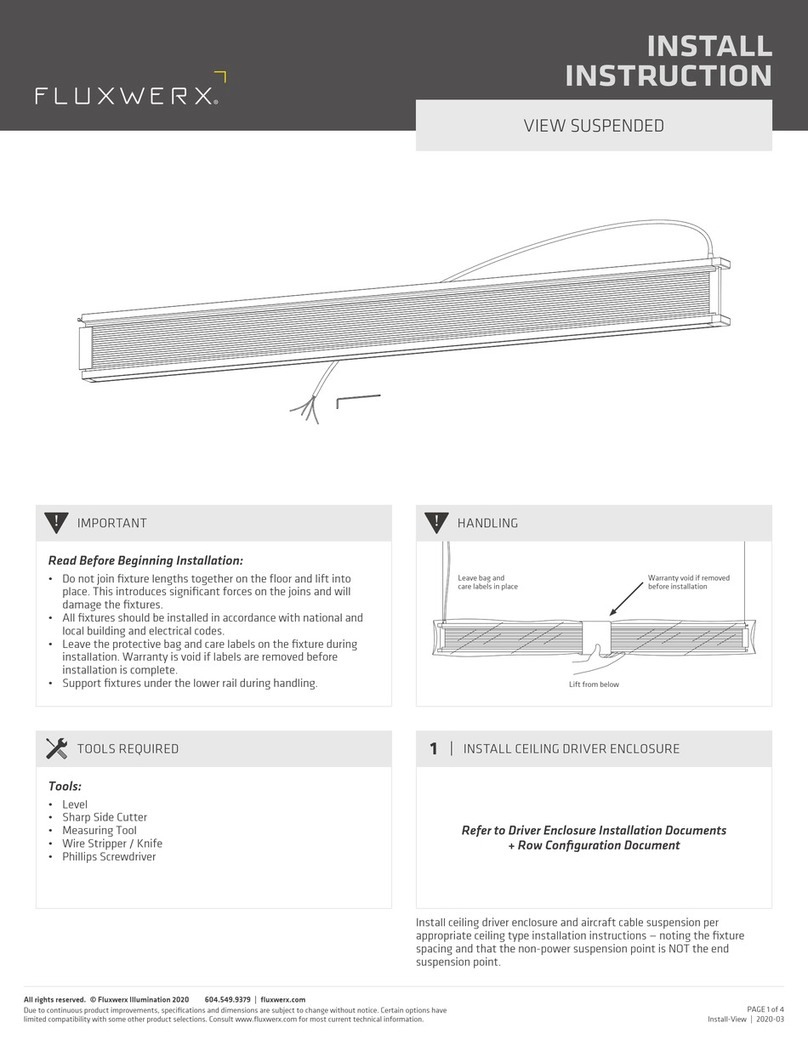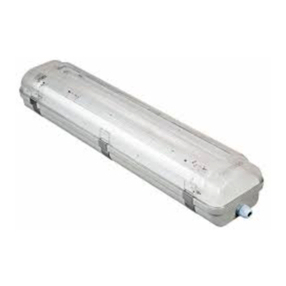Exitronix Mesa Series User manual

IMPORTANT SAFEGUARDS
READ AND FOLLOW ALL SAFETY INSTRUCTIONS.
When using electrical equipment, basic safety precautions should always be followed including the following:
• DISCONNECT AC POWER SUPPLY BEFORE SERVICING.
• Installation and servicing of this equipment should be performed by qualified service personnel only.
• Ensure that the electrical wiring conforms to the National Electrical Code NEC® and local regulations, if
applicable.
• Do not mount near gas or electric heaters.
• Do not use outdoors.
• Do not let power supply cords touch hot surfaces.
• Use caution when servicing batteries. Battery acid can cause burns to skin and eyes. If acid is spilled on skin
or in eyes, flush acid with fresh water and contact a physician immediately.
• Equipment should be mounted in locations and at heights where it will not be readily subjected to tampering
by unauthorized personnel.
• The use of accessory equipment not recommended by the manufacturer may cause an unsafe condition.
• Any modification or use of non-original components will void the warranty and product liability.
• The AC voltage rating of this equipment is specified on the product label. Do not connect equipment to any
other voltage.
• Do not use this equipment for other than intended use.
• Allow battery to charge for 48 hours before first use.
SAVE THESE INSTRUCTIONS!
Technical Support ■ (623) 580-8943 ■ [email protected]
MSA-375 Model
MSA-600 Model
Mesa Series
Installation Instructions
10070244 REV 1 - 04/21 1800-533-3948 www.barronltg.com

Table of Contents
Specifications.......................................................................................................................................................................
Receiving, Moving and Storing Systems and Batteries ..................................................................................................
• Shipping Damage............................................................................................................................................................
• Temporary Storage of Units and Batteries.......................................................................................................................
Installation Requirements...................................................................................................................................................
• Operating Environment....................................................................................................................................................
• High Altitude Operation....................................................................................................................................................
Cabinet Mounting ................................................................................................................................................................
• Tools Required .................................................................................................................................................................
• Mounting Hardware..........................................................................................................................................................
• Knockout Locations..........................................................................................................................................................
• Cabinet Mounting.............................................................................................................................................................
AC Connections ..................................................................................................................................................................
• AC Wiring Preparations ...................................................................................................................................................
• AC Input Voltage Selector Plug Installation .....................................................................................................................
• AC Input/Output Wiring Connections to Terminal Block...................................................................................................
Battery Information .............................................................................................................................................................
• Tools ..............................................................................................................................................................................
• Battery Installation and Connection ...............................................................................................................................
• Battery Voltage Check ...................................................................................................................................................
Final Installation Checklist ...............................................................................................................................................
System Start-Up Procedure ..............................................................................................................................................
System Test ........................................................................................................................................................................
System Self Test / Diagnostics .........................................................................................................................................
• Self Test / Diagnostic Functions .....................................................................................................................................
• Self Test / Diagnostic Indication......................................................................................................................................
Maintenance........................................................................................................................................................................
• Safe Shut Down Procedure ...........................................................................................................................................
• Routine System Maintenance ........................................................................................................................................
• Manual Routine Inverter Tests .......................................................................................................................................
• Routine Battery Inspection and Maintenance ................................................................................................................
• Battery Replacement Procedure.....................................................................................................................................
• Battery Disposal..............................................................................................................................................................
3
4
4
4
4
4
4
5
5
5
5
5
5
6
6
7
9
10
10
12
12
12
13
13
13
13
14
14
14
14
15
15
15
Mesa Series
Installation Instructions
10070244 REV 1 - 04/21 2 800-533-3948 www.barronltg.com

Specifications
Input
• Input voltage: Universal 120VAC or 277VAC.
• Input frequency: 60Hz ±2%
• Input surge protection: Meets UL 924
Output
• Output voltage: Universal 120VAC or 277VAC, 60Hz. Other voltages available upon request
• Output regulation: (Static) ±5% based on a 0% - 100% resistive load
• Minimum loading: None required
• Output distortion: Less than 3% THD linear load
• Load power factor: 0.44 lead to 0.44 lag
• Output frequency: ±0.3 Hz during emergency
• Time to transfer to inverter after a utility power failure: <1 second
Battery
Note: Sealed lead calcium battery performance rated at 25°C (77°F) for load.
• Battery type: Maintenance-free sealed lead calcium
• Battery charger: Fully automatic dual-mode with temperature compensation
• Recharge time: Meets UL requirements (96 hours)
• Battery protection: Automatic low-battery voltage disconnect and reverse polarity protection.
• Standard batteries lifespan: Sealed lead calcium: 7-year life
• Battery voltage: 60VDC or 96VDC (depends on model)
• Runtimes: 90 minutes standard.
• Operating temperature: 20ºC to 30ºC (68ºF to 86ºF)
• Relative humidity: 95% non-condensing
Table 1 - Physical and Electrical Specifications
*System weights shown include installed batteries
MSA-375 MSA-600
MSA-375
MSA-600
120/277VAC
120/277VAC
375/375
600/600
113
172
51.3
78.1
98%
98%
5
8
60
96
7.3
7.1
3.43
5.50
1.49
2.38
11
15
205
275
MODEL
NUMBER
INPUT/OUTPUT
VOLTAGE
CAPACITY
For 1.5 Hrs.
(Watts/VA)
SYSTEM
WEIGHT*
lbs. kg.
SYSTEM
EFFICIENCY
(Full Load)
NUMBER
OF
BATTERIES
BATTERY
VOLTAGE
(VDC)
BATTERY
CURRENT
(Amps)
AC INPUT
CURRENT (MAX)
120VAC 277VAC
THERMAL OUTPUT
(BTUs)
On-Line Emergency
MSA-375
MSA-600
MODEL
NUMBER
HOUSING DIMENSION
Length
18.0” (37.5cm)
18.0” (37.5cm)
Height
16.625” (42.2275cm)
25.25” (64.135cm)
Depth
8.25” (20.32cm)
8.25” (20.32cm)
Mesa Series
Installation Instructions
10070244 REV 1 - 04/21 3 800-533-3948 www.barronltg.com

Receiving, Moving, and Storing Systems and Batteries
Shipping Damage
Inverter system batteries are shipped separately.
Carefully inspect all cartons upon receipt for evidence of shipping damage.
Notify carrier immediately of leaking or damaged cartons for possible concealed damage.
Temporary Storage of Units and Batteries
For temporary storage of Mesa inverter systems and batteries prior to installation, select a clean, cool, dry location with
normal ventilation for human habitation and level floors.
Storage Temperature:
Store all batteries at 0°C to 40°C (32°F to 104°F). Batteries will have a longer shelf life if stored at 15°C (60°F). The Mesa
electronics and battery cabinets may be stored at -20°C to 60°C (-4°F to 140°F).
IMPORTANT:
Lengthy storage of batteries will cause irreversible damage to the cells.
Failure to connect Mesa inverter system batteries to an energized charging circuit within 90 days from the date of
shipment will void the battery warranty.
DANGER: Explosive - Can Cause Blindness or Other Severe Injuries
Every type of battery can produce hydrogen gas, even sealed, maintenance-free batteries. The gas is vented through the
vent caps and into the air. Do not allow smoking, sparks, or flames in battery storage location because hydrogen is
concentrated under the vent cap of each cell of the battery. Hydrogen is highly explosive, and is hard to detect because it
is colorless, odorless, and lighter than air.
Installation Requirements
Operating Environment
Install the Mesa inverter system in a clean, cool, dry place with normal ventilation for human habitation and in such a
location to hamper vandalism but allow easy access for testing and maintenance.
Operating Temperature:
MSA inverter systems are UL Listed for 20°C to 30°C (68°F to 86°F) operation.
Battery performance and service life is maximized if the operating temperature is maintained at 25°C (77°F).
Temperature Effect on Lead Calcium Battery Performance:
Lead Calcium batteries will be less efficient at temperatures below 20°C (68°F), and high temperatures will reduce battery
life. Typically, at 35°C (95°F), battery life will be half of what it would be at normal temperature of 25°C (77°F). At 45°C
(113°F), battery life will be one-fourth of normal.
Ventilation:
The air around the unit must be clean, dust-free, and free of corrosive chemicals or other contaminants.
Do not place the Mesa inverter system or batteries in a sealed room or container.
CAUTION: Never install batteries in a sealed room or enclosure.
High Altitude Operation:
The maximum operating temperature drops 1°C per 300 meters (2°F per 1000 feet) above sea level. Maximum elevation
is 3000 meters (10,000 feet).
Mesa Series
Installation Instructions
10070244 REV 1 - 04/21 4800-533-3948 www.barronltg.com

Cabinet Mounting
Tools Required
The following tools are required to install the system:
Socket set, Phillips screwdriver, diagonal wire cutters, long nose pliers, electrical tape, digital Volt-Ohm meter, safety
glasses with side shields, small punch (knockout removal), hammer, electric drill, wood or masonry bits, level.
Mounting Hardware
Mounting hardware is not provided. Care should be taken when selecting mounting hardware to assure that it is the
proper type for the application and sized to safely support the system’s full weight when installed, assuring safe and
secure attachment of system to wall surface or building structures. For ease of installation, the factory recommends that
the head size of mounting screws or bolts be small enough to pass through the keyhole knockouts provided for mounting.
This will allow the unit to be hung on partially installed mounting hardware and facilitate easy cabinet removal if ever
necessary.
Knockout Locations
All models provide knockouts on the top and sides of the unit. Additional entry points, if required can be added using a
metal punch. Do not drill into the cabinet, as metal filings can cause short circuits and damage the equipment.
NOTE: Consider unit knockout locations prior to mounting unit. Allow room for easy routing of conduit to entry point.
Cabinet Mounting Instructions
1. Remove cover and any packing material inside unit housing that may have been used for shipping purposes.
2. Remove the appropriate knockouts, 7/8” diameter, on the top and/or sides of the unit housing to facilitate conduit
attachment. Also remove keyhole knockouts in the upper and lower corners on the back of the housing.
3. Secure housing to mounting surface through all keyhole knockouts provided using mounting hardware (not supplied)
sized appropriately to support the unit weight.
AC Connections
CAUTION:
• The Mesa inverter system units contain hazardous AC and DC voltages. Because of these voltages, a qualified
electrician must install the Mesa inverter system, AC line service, and batteries. The electrician must install the AC line
service according to local, state and NEC codes and must be familiar with batteries and battery installation.
• Before installing, maintaining, or servicing the unit, always remove or shut off all sources of AC power to the Mesa
inverter system. Turn the unit battery circuit breaker (CB-1) off to make sure the unit will not supply output voltage. Turn
the unit AC input breaker (CB-2) off (if provided). Turn the AC line input circuit breaker OFF at the service panel.
• Whenever AC and/or DC voltage is applied, there will be AC voltage inside the Mesa inverter system unit; the unit can
supply power from AC line or from its batteries. To avoid equipment damage or personal injury, always assume that
there may be voltage inside the Mesa inverter system.
• Remove rings, watches, and other jewelry before installing the AC wiring. Always wear protective clothing and eye
protection and use insulated tools when working near batteries. Whenever servicing an energized unit with the inside
panel open, electric shock is possible; follow all local safety codes. TEST BEFORE TOUCHING!
• To reduce the risk of fire or electric shock, install the Mesa inverter system and the batteries in a temperature-controlled
and humidity-controlled indoor area free of conductive contaminants. See the Installation Requirements section on
page 4 for operating environment specifications.
Mesa Series
Installation Instructions
10070244 REV 1 - 04/21 5 800-533-3948 www.barronltg.com

AC Connections, Continued
AC Wiring Preparations
1. Remove the system’s front cover.
2. Make sure the Mesa inverter system input and output voltages are correct for the particular application. Remember that
the Mesa system provides single-phase power only.
3. The input circuit breaker in the input service panel provides the means for disconnecting AC to the Mesa inverter
system. Only authorized persons shall be able to disconnect AC to the unit. (See NEC 700-20 and 700-21.)
CAUTION: To prevent electrical shock or equipment damage, for all units, make sure the Mesa battery is disconnected
and the AC input circuit breaker at the service panel is OFF before making AC connections to the Mesa inverter system.
4. If not previously done, remove cabinet knockouts for AC Input and AC Output as described in the Cabinet Mounting
section on page 5 depending on mounting method.
CAUTION: Do not drill the cabinet; drill filings may damage the unit and prevent it from operating. If larger knockouts are
needed, use a chassis punch to enlarge the appropriate knockout. Do not add additional or unnecessary knockouts.
5. Install the input and output conduits.
6. Run the AC Input service conductors and AC Output conductors through separate conduits. Mesa inverter system
emergency output circuits shall be installed in dedicated conduit systems and not shared with other electrical circuits as
described in NEC 700-9(b).
Mesa models can be configured for either 120VAC or 277VAC input connections, as well as various modes of output
operation as described in this section. Refer to the appropriate wiring diagrams to properly connect the utility AC power,
fixtures and external switching or dimming device (where applicable). Perform all wiring procedures in accordance with
applicable codes.
AC Input Voltage Selector Plug Installation
Mesa inverter systems may be operated from either 120VAC or 277VAC power sources. Determine the actual AC input
line voltage and install the provided Voltage Selector Jumpers in the position next to the system terminal block that
matches the line voltage potential as shown in the illustration below. (Fig. 1 and 2)
NOTE: Factory terminated jumper wires are provided with Mesa systems for making user selected input/output voltage
connections.
CAUTION: Failure to install the Voltage Selector Jumpers will prevent system operation. Installing the Voltage Selector
Jumpers in the position that does not match the actual AC input line voltage will damage the unit, void the warranty, and
may cause a dangerous or unsafe condition.
Fig. 1 Fig. 2
Mesa Series
Installation Instructions
10070244 REV 1 - 04/21 6 800-533-3948 www.barronltg.com

AC Connections, Continued
AC Input/Output Wiring Connections to Terminal Block
Depending on how the fixture load is to be operated, wire the system as described below:
Normally-On Operation - Connected fixture(s) remain illuminated in AC and emergency modes. See Fig. 3.
Normally-Off Operation - Connected fixture(s) illuminate only upon loss of utility AC power. See Fig. 4.
Normally-On and Normally-Off Operation - A combination of the operating modes described above. See Fig. 5.
Switched Load Operation - Single Circuit - Connected fixture(s) can be extremely switched and will illuminate upon loss of
utility AC power regardless of external switch position. See Fig. 6.
CAUTION: If the inverter being used has the AO option, then please refer to Fig. 7, 8, or 9.
Fig. 3 - Normally ON Loads
ICB*
OCB1* Fig. 4 - Normally OFF Loads
ICB*
OCB1*
Fig. 5 - Normally ON & OFF Loads Fig. 6 - Switched Loads
OCB2*
OCB2*
ICB*
OCB1*
ICB*
Legend
INPUT SUPPLY FROM UNSWITCHED UTILITY RATED 20 AMPS MAXIMUM
OUTPUT(S) TO LIGHTING LOADS
AVAILABLE AS AN OPTION
Mesa Series
Installation Instructions
10070244 REV 1 - 04/21 7 800-533-3948 www.barronltg.com

AC Connections, Continued
AC Input/Output Wiring Connections to Terminal Block
Fig. 7 - Switched or Dimmed Emergency Loads (for use with AO models)
Note: Only (2) of (4) possible switched or dimmed circuits shown
Fig. 8 - Switched or Dimmed and Unswitched Emergency Loads (for use with AO models)
Note: Only (2) of (4) possible switched or dimmed circuits shown
Legend
INPUT SUPPLY FROM UNSWITCHED UTILITY RATED 20 AMPS MAXIMUM
OUTPUT(S) TO LIGHTING LOADS
AVAILABLE AS AN OPTION
Mesa Series
Installation Instructions
10070244 REV 1 - 04/21 8800-533-3948 www.barronltg.com

AC Connections, Continued
AC Input/Output Wiring Connections to Terminal Block
Battery Information
Important Safety Precautions
The installer must take these precautions:
• Wear protective clothing, eyewear, rubber gloves and boots. Batteries contain corrosive acids or caustic alkalis and
toxic materials and can rupture or leak if mistreated. Remove rings and metal wristwatches or other metal objects and
jewelry. Do not carry metal objects in pockets where the objects can fall onto the batteries or into the Mesa inverter
system.
• Tools must have insulated handles so that they will not short battery terminals. Do not allow a tool to short a battery
terminal to another battery terminal or to the cabinet at any time. Do not lay tools or metal parts on top of the batteries,
and do not lay any objects where they could fall onto the batteries or into the cabinet.
• Install the batteries as described in this manual. When connecting cables, never allow a cable to short across a
battery’s terminals or to the cabinet.
• Keep the cable away from any sharp metal edges.
• Install the battery leads so they cannot be pinched by the Mesa inverter system cover/door.
• Where conductors may be exposed to physical damage, protect conductors in accordance with NEC requirements.
• Full voltage and current are always present at the battery terminals. The batteries used in this system can produce
dangerous voltages, extremely high currents, and possible risk of electric shock. Batteries may cause severe injury if
the terminals are shorted together or to ground (earth). Be extremely careful to avoid electric shock and burns caused
by contacting battery terminals or shorting terminals during battery installation. Do not touch uninsulated battery
terminals.
• A qualified electrician who is familiar with battery systems and required precautions must install and service the
batteries. Any battery used with this unit shall comply with the applicable requirements for batteries in the standard for
emergency lighting and power equipment, UL 924. Cabinets are designed to be used with, and batteries must be
replaced by identical cells or a Manufacturer approved equivalent. If using substitute batteries not supplied by the
Manufacturer, the unit’s UL listing will be void, and the equipment may fail to perform properly. The installation must
conform to national and local codes as well. Keep unauthorized personnel away from batteries.
Fig. 9 - Dimming Option Control Wiring
Note: Only (1) of (4) possible circuits shown
ON
CAUTION: The sum of the dimmed load levels for all circuits combined
must not exceed unit rating in emergency mode.
Note: Dimming switches S1 and S2 are designed for independent
settings to allow different emergency dimming control voltages for
each circuit
CAUTION: Dimming switches must be proframmed such that total
loads do not exceed unit rating in emergency mode.
Dimming Option Programming Table
Note: Position-1 and Postion-2 are provided for each of the (4) circuits
Mesa Series
Installation Instructions
10070244 REV 1 - 04/21 9 800-533-3948 www.barronltg.com

Battery Information, Continued
Tools
The following tools are required to install the system batteries: long nose pliers, digital Volt-Ohm meter, safety glasses.
CAUTION: Always use insulated tools for battery installation.
Battery Installation and Connection
Battery Placement:
The MSA-375 models are provided with (5) 12V sealed lead calcium
batteries (60VDC string). The MSA-600 Models are provided with (8) 12V
sealed lead calcium batteries (96VDC string).
MSA-375: Carefully place all batteries in the unit battery (lower)
compartment with positive (+) red terminals facing outwards and upwards.
Position batteries in the central location towards rear of the compartment.
Carefully install battery retention bracket with the supplied hardware.
MSA-600: Carefully place (4) batteries in each of the battery (central and
lower) compartments with positive (+) red terminals facing outwards and
upwards. Position batteries in the central locations towards rear of the
compartments. Carefully install battery retention brackets in each
compartment with the supplied hardware.
Battery Wiring:
CAUTION: To prevent possible damage to the unit when connecting
batteries, verify that the unit battery circuit breaker CB-1 is in the OFF
position.
Connect batteries with supplied wiring jumpers using hardware provided
with batteries. For MSA-375, refer to Battery Wiring Diagram 1 (Fig. 11). For MSA-600 refer to Battery Wiring Diagram 2
(Fig. 12).
Battery Chart:
Model System DC Voltage Number of Batteries Battery Part Number Battery Wiring Diagram
MSA-375 60 5 INV-03-005 1
MSA-600 96 8 INV-03-005 2
IMPORTANT: Observe correct polarity on battery terminals.
Fig. 10 - Battery Installation and Wiring on
the MSA-600 Model (For Reference)
Note: Battery brackets installed on the front
Mesa Series
Installation Instructions
10070244 REV 1 - 04/21 10 800-533-3948 www.barronltg.com

Battery Information, Continued
Fig. 11 - Battery Wiring Diagram 1
Fig. 12 - Battery Wiring Diagram 2
Mesa Series
Installation Instructions
10070244 REV 1 - 04/21 11 800-533-3948 www.barronltg.com

Battery Information, Continued
Battery Voltage Check
Using a digital Volt-Ohm meter, check for correct nominal battery voltage between DC Input NEG and POS wires. Voltage
reading should be ±10% of system’s nominal: 60VDC for MSA-375, 96VDC for MSA-600 operating voltage.
Final Installation Checklist
IMPORTANT: Before proceeding to the System Start-Up Procedure section, complete the Final Installation Checklist
below:
1. Ensure the Mesa cabinet is securely fastened to a wall or other structure.
2. Ensure that the input circuit breaker in the building service panel serving as the AC disconnect to the Mesa system is in
the OFF position. Ensure that both AC input and output breakers (if provided) is in the off position.
3. Check for proper ground connections in the Mesa unit cabinet.
4. Check for any loose wiring connections in the Mesa unit cabinet.
5. Check that correct nominal battery voltage (60VDC for MSA-375, 96VDC for MSA-600) is present in the Mesa unit
between the battery’s NEG and POS end terminals.
6. Verify AC Input Voltage Selector Jumpers are installed and in the proper position to accept the AC input line voltage for
the system voltage configuration.
CAUTION: Failure to install the Voltage Selector Jumpers will prevent system operation. Installing the Voltage Selector
Jumpers in the position that does not match the AC input line voltage will damage the unit, void the warranty and may
cause a dangerous or unsafe condition.
System Start-Up Procedure
IMPORTANT: The Mesa inverter system is a sophisticated electronic backup power supply. Care must be taken to follow
the steps below in their exact sequence. Failure to do so may result in possible equipment failure.
CAUTION: Familiarize yourself with the shut down procedure in the Maintenance - Safe Shut Down Procedure section
on page 14 before proceeding with the Mesa system start-up.
1. Hold S-1 Pre-charge Switch in the on (up) position for 15 seconds then release.
2. Place battery circuit breaker (CB-1) in the on position.
3. Apply utility AC power to the system by turning the branch circuit breaker in the main power panel to the ON position.
Place AC input breaker CB-2 (if provided) in the on position. Place AC output breakers CB-3 & CB-4 (if provided) in the
on position.
4. Observe the LED Status indicators and verify the following:
a. AC ON indicator (red LED) is illuminated (indicates AC utility power is available to unit).
b. CHG ON indicator (green LED) is illuminated (indicates battery is connected and charger is operational).
5. Verify Normally-On fixtures or switched fixtures (where applicable) are illuminated (local fixture switch must be in ON
position).
Mesa Series
Installation Instructions
10070244 REV 1 - 04/21 12 800-533-3948 www.barronltg.com

System Test
Momentarily push TEST switch and verify the following:
1. INV ON status indicator (yellow) illuminates (indicates inverter is operational).
2. Normally-On, Normally-Off and Switched fixtures are illuminated (where applicable).
For G2 version units
These models also provide for manual testing by pushing the TEST button in a specific pattern:
1. Action Reaction and LED Indication
Push test switch Once (within (2) seconds) (30) second test: One blink GREEN/pause
Push test switch Twice (within (2) seconds) (30) minute test: Two blinks GREEN/pause
Push test switch Three times (within (2) seconds) (90) minute test: Three blinks GREEN/pause
Push test switch and hold for (3) seconds Cancels test
Push test switch and hold for (6) seconds System reset
2. INV ON status indicator (yellow) illuminates (indicates inverter is operational).
3. Normally-On, Normally-Off and Switched fixtures are illuminated (where applicable).
System Self-Test / Diagnostics
Once the system is properly installed in accordance with the installation instructions, and AC power is supplied to the, the
dual color (SDT STATUS) LED indicator will illuminate, followed by the amber (INV ON) LED indicator. The dual color LED
indicates the unit's status. A steady GREEN LED indicates normal service; A blinking GREEN/RED LED indicates the
battery is charging; A blinking RED LED (in different combinations) indicates a service alert. Refer to the INDICATION
chart in section 110.2 for details. During loss of normal utility power, the dual color LED will not be illuminated. The
AMBER (INV ON) LED indicator will be illuminated only during inverter operation initiated by the loss of utility power or
during any manual or automatic self-test.
Do not touch components inside the unit. DC voltage is always present at the batteries and battery cables.
Self-Test/Diagnostic Functions
The self-diagnostic function is factory preset and performs the following:
1. Continuous monitoring of battery, battery charger and connected loads.
2. Self-testing and a (30) second discharge with a randomized start (per UL 924, Sec. 30.2), once every (30) days, after
normal utility power has been supplied for a minimum of (48) hours.
3. Self-testing and a (30) minute discharge with a randomized start (per UL 924, Sec. 30.2), once every (180) days, after
normal utility power has been supplied for a minimum of (48) hours.
4. Self-testing and a (90) minute discharge with a randomized start (per UL 924, Sec. 30.2), once every (365) days, after
normal utility power has been supplied for a minimum of (48) hours.
Self-Test/Diagnostic Indication
SDT Status LED Indicator System Status
Green steady Normal Service
RED/GREEN blinking High Charge Enabled
GREEN blinking Test Mode Enabled
One blink RED/pause Battery Charger Fault
Two blinks RED/pause Battery Fault
Four blinks RED/pause Lamp/Load Fault
Mesa Series
Installation Instructions
10070244 REV 1 - 04/21 13 800-533-3948 www.barronltg.com

Maintenance
Safe Shut Down Procedure
CAUTION: To avoid possible equipment damage or personal injury, assume that there is AC voltage present inside the
Mesa inverter system unit any time AC input power or DC battery voltage is applied. The inverter is capable of providing
output voltage from the batteries even when there is no AC input line voltage. When AC input voltage is present, the unit
can provide output voltage even when the batteries are disconnected.
Do not touch components inside the unit. DC voltage is always present at the batteries and battery cables.
Final Shut Down Procedure
1. Open the unit’s front access panel.
2. Place unit battery circuit breaker (CB-1) in the off position. Place unit AC input breaker CB-2 (if provided) in the off
position, to make sure the unit will not supply output voltage.
3. Place the AC Input circuit breaker at the service panel in the OFF position.
CAUTION: HAZARDOUS ENERGY IS STORED IN CAPACITORS INSIDE THE MESA UNIT. AFTER TURNING OFF
SWITCHES, ALLOW 5 MINUTES FOR CAPACITORS TO DISCHARGE BEFORE ATTEMPTING ANY SERVICE
PROCEDURES.
4. If the service technician does not need to access the inside of the unit, keep the unit’s front cover/door closed.
5. If the unit will be shut off for an extended period of time, recharge battery every 60 to 90 days.
CAUTION: The battery will be damaged and the warranty voided if not routinely recharged.
NOTE: To turn power back on, follow the steps outlined in the System Start-Up Procedure section on page 12. Be sure
to complete all of the steps to assure the unit will operate properly.
Routine System Maintenance
The Mesa inverter system unit is designed to provide years of trouble-free operation. The unit does require some routine
attention to assure peak performance. The manufacturer recommends a preventative maintenance check be performed
by a qualified service technician at least every six months. The technician must observe important safety precautions
while performing the following recommended tasks:
• Inspect and clean the unit interiors;
• Inspect all batteries for leaks, case swelling, or terminal corrosion;
• Perform an emergency operation test to check operation of all critical connected loads
Manual Routine Inverter Tests
NFPA101 requires that Emergency Lighting Equipment be tested on a monthly basis for a period of at least 5 seconds,
and a minimum of 90 minutes once a year. We strongly recommend these guidelines be followed to ensure system
readiness, and to prolong battery life. The Mesa system was designed with a front panel test switch to facilitate monthly
testing. Simply depress the button and hold to test the inverter at any time. Once released, the Mesa will revert back to
standby operation. For annual 90-minute discharge or other prolonged tests, simply turn off the AC Input breaker at the
service panel.
Mesa Series
Installation Instructions
10070244 REV 1 - 04/21 14 800-533-3948 www.barronltg.com

Maintenance, Continued
Routine Battery Inspection and Maintenance
Sealed Lead-Calcium Batteries
Maintenance-free cells are the most common type of battery used today in standby equipment. By design, it is as
maintenance-free as a battery can be. It is recommended, however, that some simple steps be taken to increase system
life and maximize reliability:
1. A quarterly visual check of the battery should be conducted to look for deformities in the battery case, electrolyte
leakage, and/or terminal corrosion. Any batteries with these conditions are defective and should be replaced. Any
corroded terminals found, regardless how slight, are to be cleaned at once to prevent system failure.
2. Once a year, all battery connections should be checked for tightness and cleaned and retightened, as necessary.
Battery Replacement Procedure
WARNINGS:
• Always use the same quantity and type of battery as replacements.
• Substituting batteries not supplied by the Manufacturer will void the UL listing of the system and may cause equipment
failure. To ensure the superior performance of your Mesa inverter system and to maintain proper charger operation,
replace spent batteries only with those having the same part number, voltage and ampere-hour rating as the original
batteries.
1. Follow the proper shut down procedure as described in the Maintenance - Safe Shut Down Procedure section on
page 14.
2. Carefully disconnect all battery wiring. Remove battery retention bracket(s).
3. Remove the batteries from the cabinet.
4. Install new batteries following the instructions outlined in the Battery Information - Battery Installation and
Connection section on page 10.
Battery Disposal
WARNINGS:
• Do not dispose of batteries in a fire, the batteries could explode.
• Do not open or mutilate batteries.
• Released electrolyte is highly toxic and harmful to the skin and eyes.
CAUTION: Batteries contain lead or cadmium, depending on model. Many state and local governments have regulations
about used battery disposal. Please dispose of the batteries properly.
Mesa Series
Installation Instructions
10070244 REV 1 - 04/21 15 800-533-3948 www.barronltg.com
This manual suits for next models
2
Table of contents
Other Exitronix Light Fixture manuals
Popular Light Fixture manuals by other brands

Lightmybricks
Lightmybricks LEGO NASA Apollo 11 Lunar Lander instructions

Evo-lite
Evo-lite Auragami AG1-24-TW instruction manual
Pixel Range
Pixel Range PixelArc C user manual
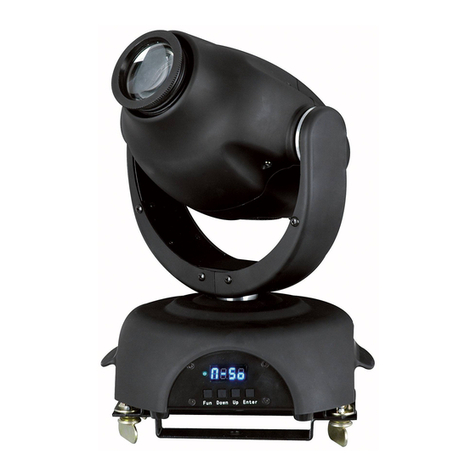
Show Tec
Show Tec MiniMax 250 user manual

Lightmybricks
Lightmybricks LEGO Land Rover Defender 42110 manual
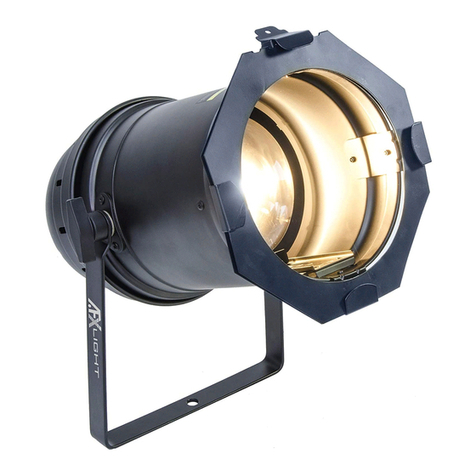
afx light
afx light PARLED100-Z instruction manual
